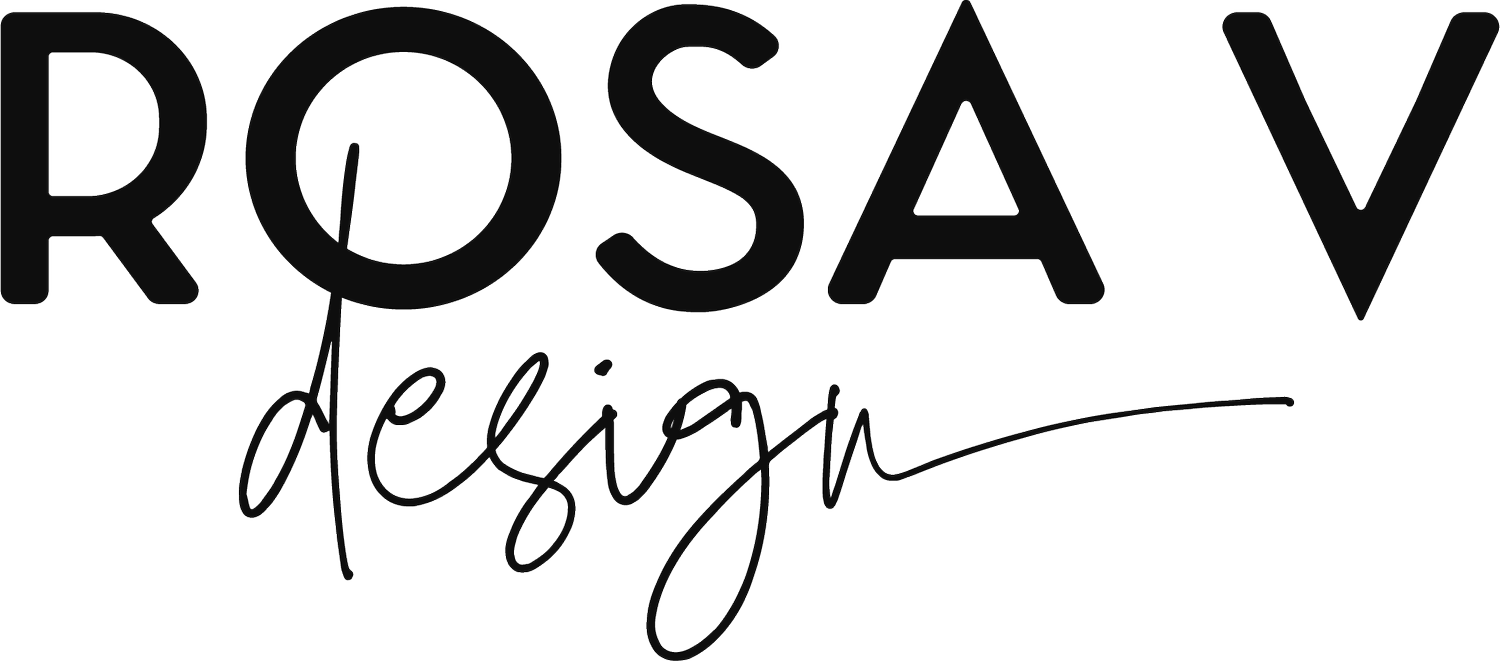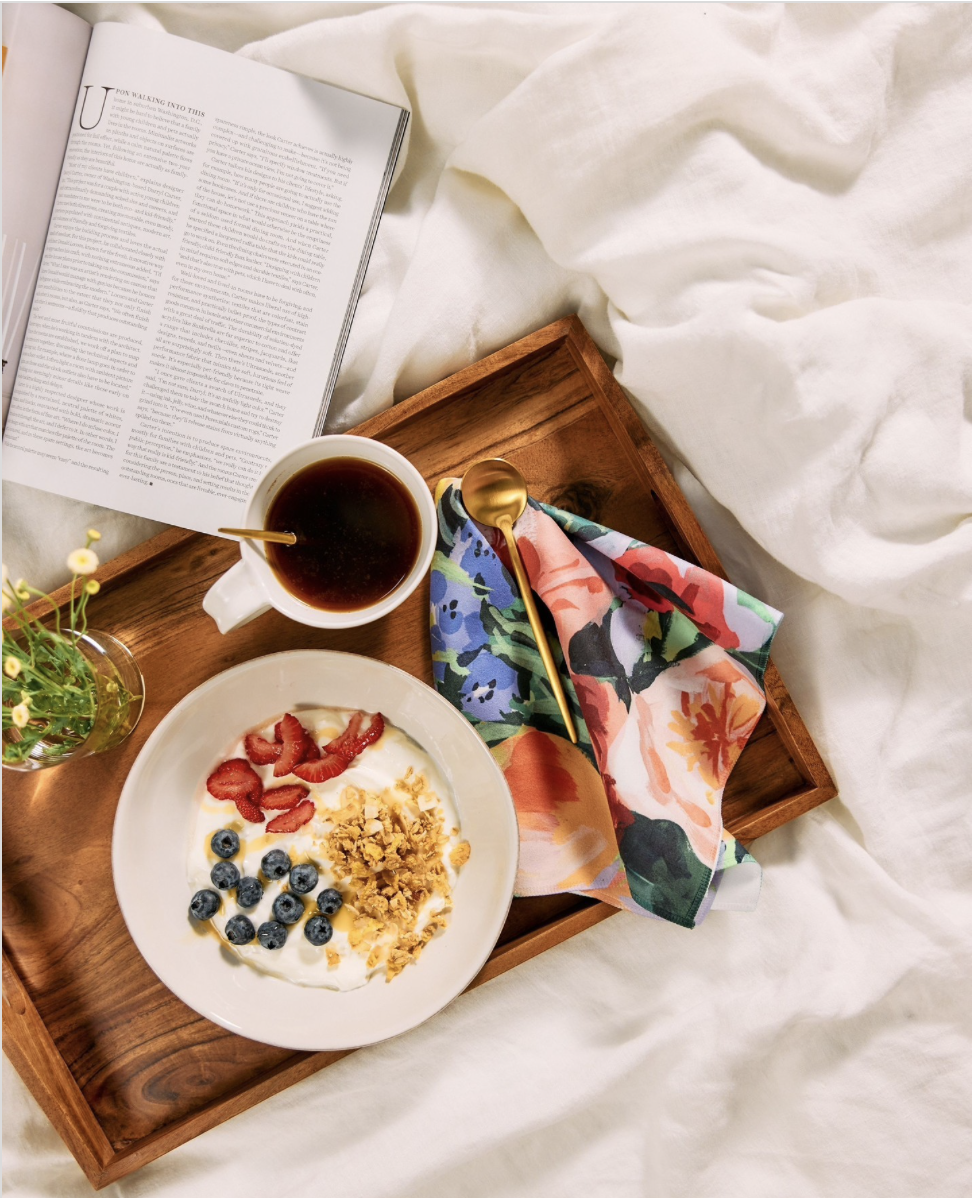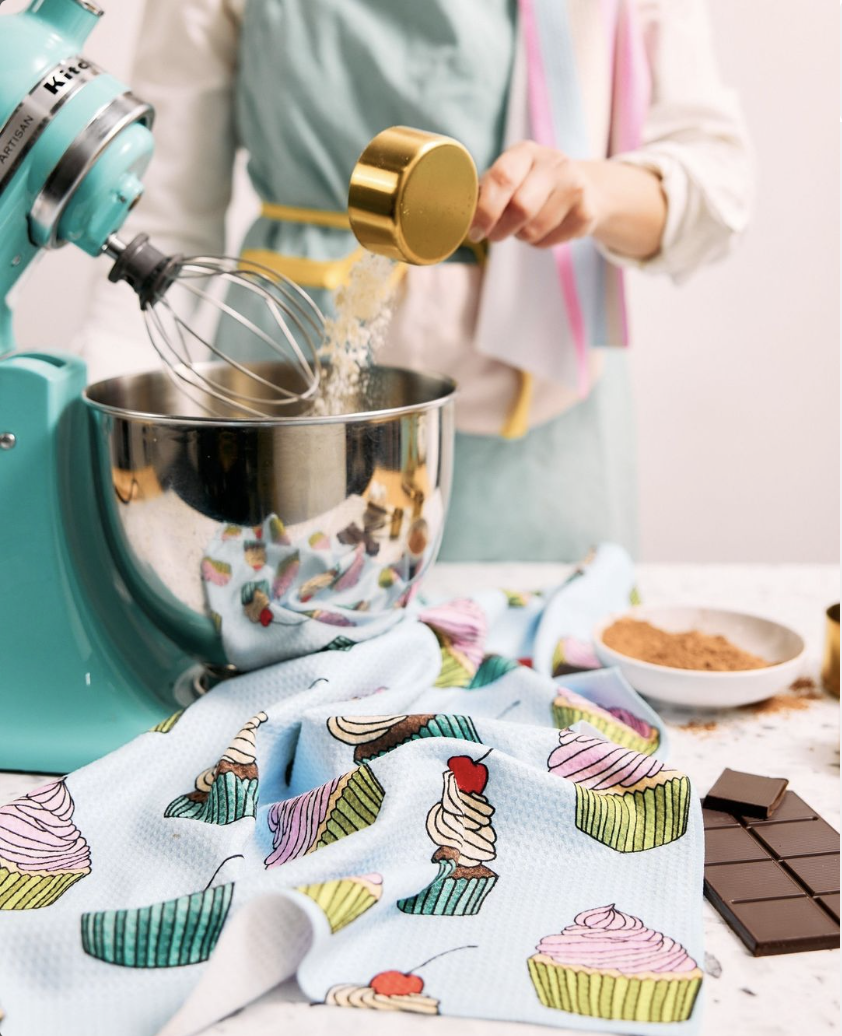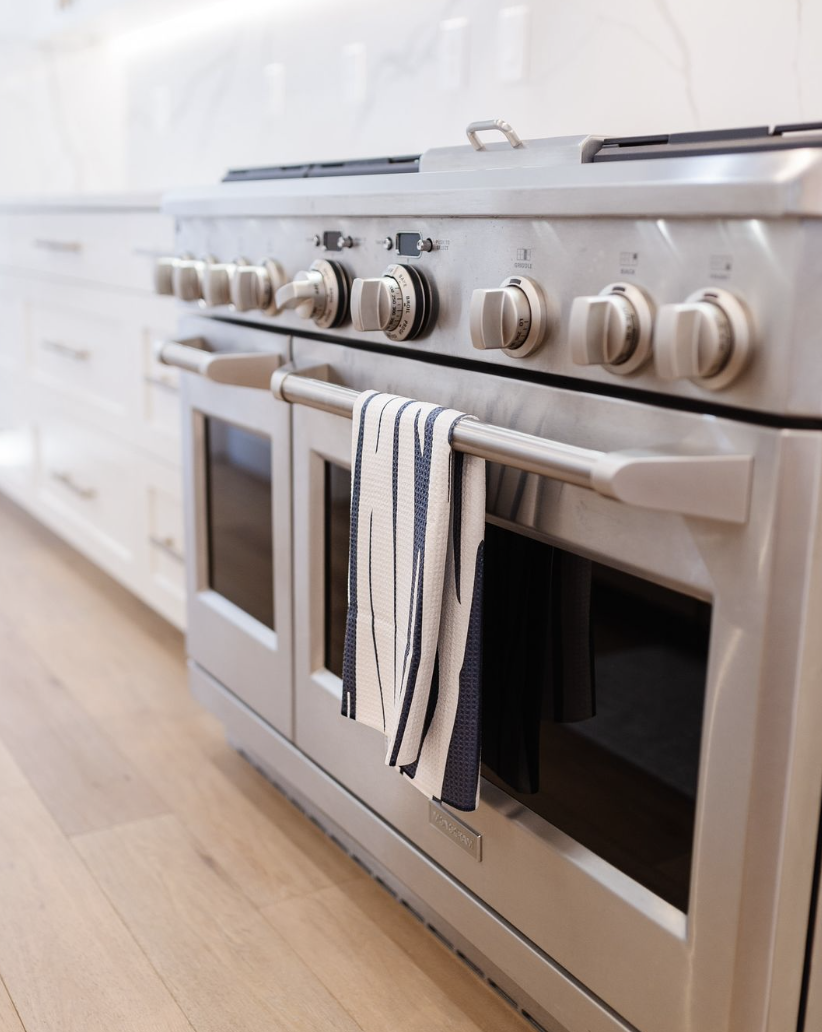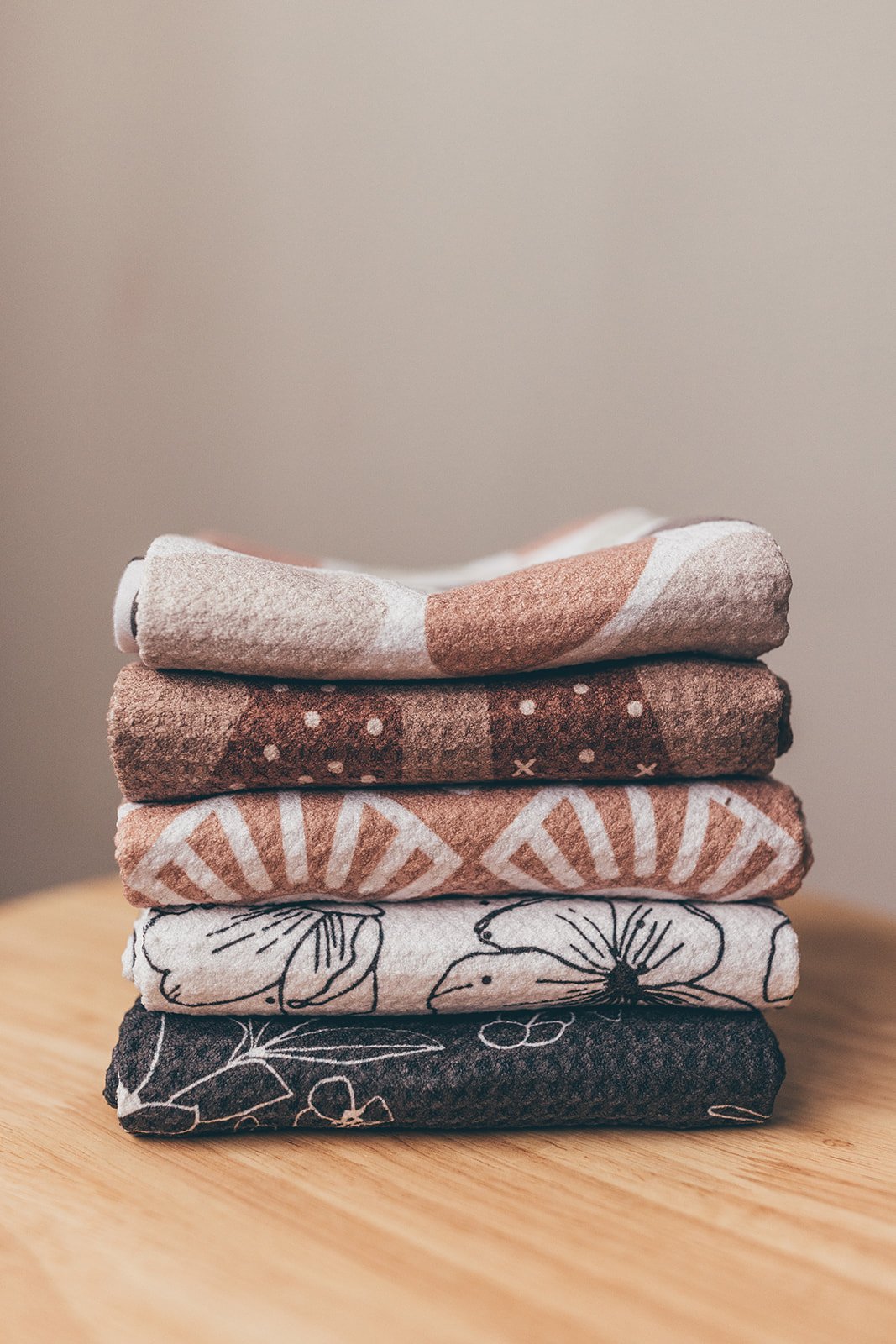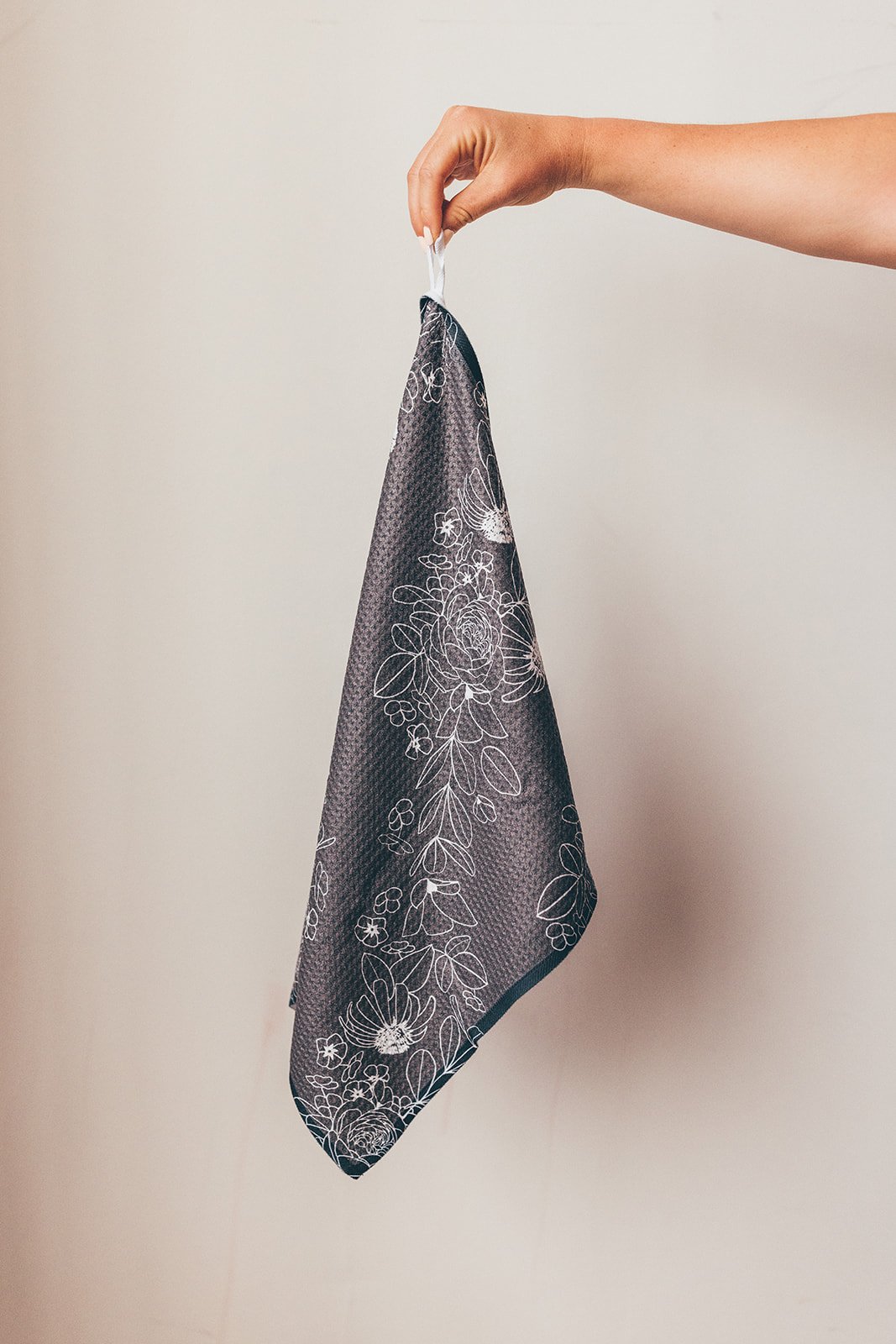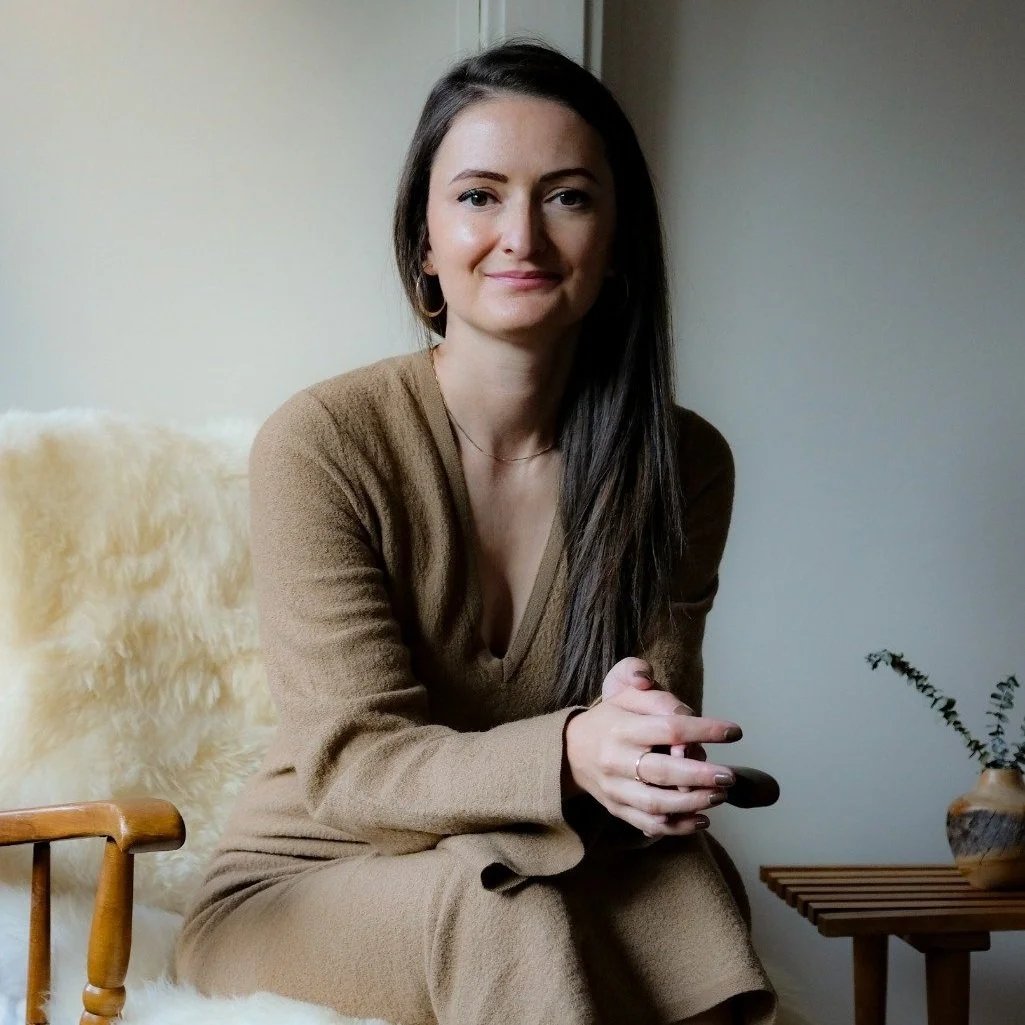The 3 Key Elements to Use in a Design Collection: Insights from Geometry’s Artist Collective Director, Cristina Sirbu
Photo Source: Geometry House
The balance between rapid company growth and maintaining a core mission are two things that oftentimes do not go hand in hand….unless you’re Geometry. Geometry, known for transforming everyday items into canvases for extraordinary art, is rewriting the narrative of how we incorporate beauty into our daily lives, one tea towel at a time.
Cristina Sirbu, the Artist Collective Director at Geometry, is the driving force behind the brand’s adaptability, strategic design choices and fostering a supportive environment for creatives.
I sat down with Cristina to learn more about her role and what makes Geometry so different from other companies in the home goods space. Along with her insights, and a look into her mindset when curating collections – Cristina laid out the 3 key elements artists should look for when taking inspiration from trends.
Geometry House
You may have seen their tea towels at a local shop in your town or in Better Homes & Gardens magazine – where they were voted Best Kitchen Tea Towel of 2023. From kitchen, to bath, beach and fitness….Geometry has cornered the towel market by doing things differently.
Photo Source: Geometry on instagram
Maintaining authenticity through rapid growth
Cristina's journey with Geometry began when the company had just four employees. From its inception, Geometry was more than just a company; it was a mission to infuse art into the everyday. This all stems from the company’s driving ethos of passion and authenticity.
Originally focusing on in-house designs, Geometry took a significant turn last year. The company expanded its horizons by developing the "artist collective," a vibrant community of artists whose works now form the majority of Geometry's offerings. This strategic pivot was not just about diversifying their product line but was rooted in the company's foundational goal: to showcase art in unconventional spaces, making it a part of the fabric of our homes beyond the traditional confines of wall-mounted frames.
How each collection takes shape
Cristina's days are a testament to the dynamic and multifaceted nature of her skill set. From managing relationships with artists to curating collections and orchestrating campaigns, her work is a blend of creative vision and meticulous planning.
When asked about the process of developing new collections, Cristina revealed a thoughtful approach that balances trend research with an innate respect for artistic expression and the customer’s experience. Whether it's analyzing market trends or engaging directly with the artist collective, her aim is to craft collections where each piece not only looks beautiful but also tells a deeper story as a whole.
Cristina’s curation process is both analytical and creative, balancing market trends with the unique artistic vision of the contributors. Her self-proclaimed “very rudimentary” method of curating involves simply taking a square of each submitted design and moving designs around – grouping the art into categories based on what products she believes they are best suited for. At first everything gets thrown into the different categories, and then she starts curating out from there. The method works for her, and shows how finding a system that works for you is better than having the fanciest workflows and tech.
Additionally, their approach to product curation—ensuring variety without overwhelming customers and maintaining fairness to artists—speaks to the company's values. If there are several plaid and similar looking floral designs (both of which are always evolving and trending), Cristina may decide to only include one or two of each. Giving the art itself a chance to be seen, and avoiding customer decision fatigue – if you’ve ever been shopping and spent hours staring back and forth between two throw pillows that are almost the same shade of green but not quite…that company must not have a Cristina.
Designing for Geometry: 3 key elements to pay attention to
As a designer myself who has launched several collections with Geometry, you can see my designs here, I have first hand experience with the care and attention to detail Geometry takes when deciding what artwork to showcase. As seasons and trends inform what the customer will be drawn to, Cristina relayed the 3 most important elements she looks at when curating a collection: color, motifs, and patterns.
Color: Last year there was a huge Pink-mas trend. That’s what Geometry customers were excited about, so those little things are important in mind.
Motifs: I don’t think anyone can forget the explosion of the llama trend a few years ago. Although Geometry has not showcased any llamas on their towels, which highlights how not every trend has to be used, they're still essential to be aware of.
Patterns: Ranging from the classic checkerboard to something more layered and detailed, pattern trends can be informed by history, fashion, geography and nature.
Continuous Growth: for Geometry & it’s Artist Collective
As for the future, Geometry is set on expanding its product line and continuously improving existing offerings – so if you are already obsessed with their towels (which if you’ve tried them, you totally are), there’s even more in-store! As their product line grows, the challenge for Cristina lies in maintaining the delicate balance between introducing new designs and ensuring that each piece is impactful and aligned with both the artists' visions and the company's ethos. As part of this growth, one of the biggest things she aims to do is bring in new artists, particularly amazing painters, sculpture or other creative fields.
With a background in art herself, Cristina understands the struggles that many independent artists face – in short, she gets it. And that first hand experience helps inform much of her decision making. A significant emphasis is placed on being fair and supportive of the artists in the collective. This includes not just the selection and curation of artwork but also ensuring that artists are not restricted in their ability to earn a living from their work. Which is why she aims to only select a few strong patterns from an artist – allowing representation by multiple artists within the collective as well as allowing artists to license unused work elsewhere.
Geometry's story is one of passion, evolution, and a breath of fresh air in the ordinary. Through the eyes of Cristina, we're offered a glimpse into the heart of a company that is not just selling products but is actively redefining the intersection of art, tradition, and everyday life. As Geometry continues to grow and explore new horizons, it remains anchored by its core values: a commitment to art, artists, and the pursuit of bringing beauty into the most unexpected places.
3 pieces of advice every creative needs to hear
I asked Cristina to share a piece of advice she wished she had received earlier on in her career. With her wealth of knowledge and experience, Cristina said three things that every creative needs to hear:
Know your worth: There's a big misconception that because we love what we do, it’s okay to be paid a little bit less – it’s not!
Separate the business from the art: This kind of ties back into knowing your worth, but in order to continue doing what we love it’s essential to advocate for yourself, and to continue learning from people who have the skills we aspire to.
Show up: even on the days when your creativity isn’t flowing as easily.
Cristina Sirbu
Director - Artist Collective | Geometry
The book Cristina recommends for every artist:
